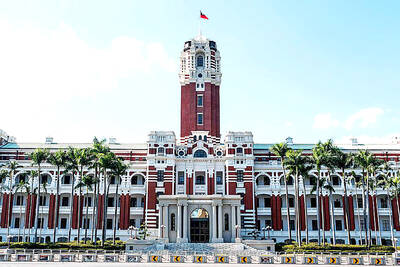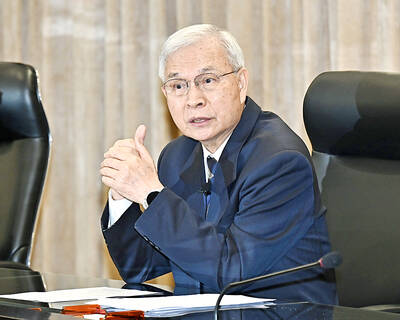After years of hesitance and half-hearted attempts to break into the Chinese market, US and European financial services companies are investing billions of dollars here in the hopes of reaping huge profits from China's dramatic rise.
Wall Street firms and some of the world's biggest banks and insurance companies, including Bank of America and American Express, have already invested more than US$20 billion during the last three years in joint ventures or strategic stakes in dozens of Chinese banks, brokerage houses or insurance companies.
And with China promising to further reform and open its financial markets, some of world's biggest stock and futures exchanges, including the New York Stock Exchange, NASDAQ and the Chicago Mercantile Exchange, are convinced that a growing number of big stock listings and futures or derivatives trading will soon come from China.
This year alone, Bank of America put US$3 billion into the China Construction Bank; a group of investors led by the Royal Bank of Scotland and Merrill Lynch invested US$3.1 billion in the Bank of China; a Goldman Sachs-led group is investing US$3 billion in the Industrial and Commercial Bank of China; and Temasek Holdings of Singapore has agreed to invest about US$5 billion in two Chinese banks.
focus on china
The accelerated push acknowledges that China has become a focal point of the global economy. It is the world's fastest-growing major economy, and its huge trade surplus and large foreign currency reserves are solidifying its status as an economic superpower.
Of course, China's financial markets are still relatively immature. Its banking system is rife with corruption, and corporate governance is poor; its stock market is depressed and seemingly broken; its brokerage houses are insolvent; and its managed currency elicits outrage overseas because of trade disputes.
And yet, there is a growing sense around the world that now is the time to invest in China or to begin creating a platform to offer financial services products and lay the groundwork for more cross-border deals with the Chinese.
"Everyone's jockeying to get a piece of what they hope is the big growth industry," says Jonathan Anderson, chief Asian economist for UBS.
One indication of the importance of the marketplace here were the visits to Beijing this week of Alan Greenspan, the Federal Reserve chairman; Treasury Secretary John Snow; the chairman of the Securities and Exchange Commission, Christopher Cox; and the chairman of the Commodity and Futures Trading Commission, Reuben Jeffery III.
The delegation of government officials and executives repeatedly referred to the dramatic changes that have taken place in China.
They praised the Chinese government and said they expected further openings as China moves toward becoming a full-fledged market economy. They also met with China's top leaders, including Prime Minister Wen Jiabao (
But the US officials also pressed for China to further appreciate its currency, and lift restrictions on foreign investing in China, like limits on stakes in brokerage firms and banks.
"We clearly see the momentum," Marc Lackritz, president of the Securities Industry Association, said here. "In the long run, this is the growth opportunity."
realization
Underlying the visit to Beijing this week of so many high-level US officials is a realization that the US trade deficit is widening, and that, to some degree, the purchase of US homes and sport utility vehicles is being partly financed by China, which is using its huge foreign exchange reserves to purchase US Treasury notes, thereby holding down interest rates.
For years, of course, big banks, insurance companies and Wall Street firms have been coming to China seeking riches. But very few of them have returned big profits; most have been disappointed by China.
During the last few years, however, deals like Lenovo's acquisition of IBM's personal computer unit and Yahoo's US$1 billion cash investment in Alibaba.com, as well as this year's banking rush, suggest that China has turned a corner.
The list of big investors is becoming more impressive. Lately, officials from Citigroup, ABN Amro, Deutsche Bank and BNP Paribas have been prowling China for financial services investments, and committing billions of dollars to new deals. Allianz of Germany and HSBC are moving to enter China's credit-card market. The New York Stock Exchange and NASDAQ are scouting for new stock listings. And a few weeks ago, the Chicago Mercantile Exchange, one of the world's biggest futures and derivatives exchanges, played host to a conference in Shanghai.
bubble warning
Still, many analysts are already warning of a bubble here. They say, often privately, that venture capital firms, banks and others are bidding up the prices of Chinese assets to ridiculous levels; that major companies are putting staggering amounts of cash into risky ventures with suspect books.
Everyone, they say, is traveling to China these days. And everyone in the financial services world seems to have caught China fever.

The CIA has a message for Chinese government officials worried about their place in Chinese President Xi Jinping’s (習近平) government: Come work with us. The agency released two Mandarin-language videos on social media on Thursday inviting disgruntled officials to contact the CIA. The recruitment videos posted on YouTube and X racked up more than 5 million views combined in their first day. The outreach comes as CIA Director John Ratcliffe has vowed to boost the agency’s use of intelligence from human sources and its focus on China, which has recently targeted US officials with its own espionage operations. The videos are “aimed at

STEADFAST FRIEND: The bills encourage increased Taiwan-US engagement and address China’s distortion of UN Resolution 2758 to isolate Taiwan internationally The Presidential Office yesterday thanked the US House of Representatives for unanimously passing two Taiwan-related bills highlighting its solid support for Taiwan’s democracy and global participation, and for deepening bilateral relations. One of the bills, the Taiwan Assurance Implementation Act, requires the US Department of State to periodically review its guidelines for engagement with Taiwan, and report to the US Congress on the guidelines and plans to lift self-imposed limitations on US-Taiwan engagement. The other bill is the Taiwan International Solidarity Act, which clarifies that UN Resolution 2758 does not address the issue of the representation of Taiwan or its people in

US Indo-Pacific Commander Admiral Samuel Paparo on Friday expressed concern over the rate at which China is diversifying its military exercises, the Financial Times (FT) reported on Saturday. “The rates of change on the depth and breadth of their exercises is the one non-linear effect that I’ve seen in the last year that wakes me up at night or keeps me up at night,” Paparo was quoted by FT as saying while attending the annual Sedona Forum at the McCain Institute in Arizona. Paparo also expressed concern over the speed with which China was expanding its military. While the US

SHIFT: Taiwan’s better-than-expected first-quarter GDP and signs of weakness in the US have driven global capital back to emerging markets, the central bank head said The central bank yesterday blamed market speculation for the steep rise in the local currency, and urged exporters and financial institutions to stay calm and stop panic sell-offs to avoid hurting their own profitability. The nation’s top monetary policymaker said that it would step in, if necessary, to maintain order and stability in the foreign exchange market. The remarks came as the NT dollar yesterday closed up NT$0.919 to NT$30.145 against the US dollar in Taipei trading, after rising as high as NT$29.59 in intraday trading. The local currency has surged 5.85 percent against the greenback over the past two sessions, central